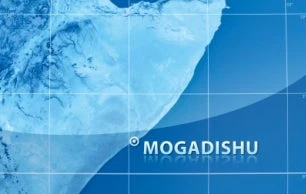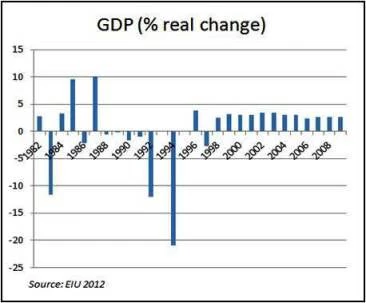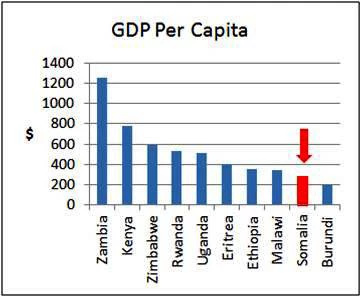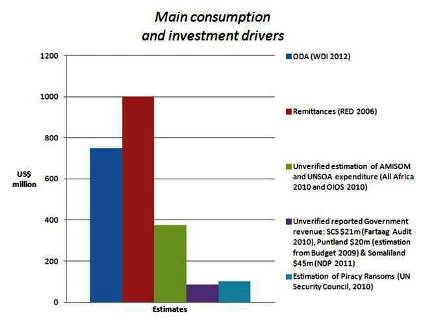
First, from a development viewpoint, there is no such thing as one Somalia. Ironically, the unrecognized Somaliland entity [see the Somaliland success story in “Yes Africa Can” ] has enjoyed stability and democratic governance, pursuing classic development interventions (service delivery through the state, infrastructure investment, capacity building …). [In addition, Somaliland appears to have very good statistics.]
By contrast, South Central Somalia, where the capital city and official -albeit transition- government of Somalia are located, is a quintessential failed state plagued by conflict and public mismanagement. Puntland lies somewhere in between, with some stability but an embryonic state under growing influence of piracy networks.
Figure 1: Somalia economic growth (click to it larger)
Alas, the scant (and shaky) data on Somalia typically does not allow for geographic distinctions. Still it highlights a few surprising trends and the shortcomings of the current aid model there.
Somalia appears to have experienced modest economic growth (to the tune of 2-3%) since the late 1990s. This could be reflecting high levels of activity in Somaliland and/or good performance in ‘niche’ markets such as banking, telecoms, security (of the type that need very little state involvement or infrastructure to prosper). Much of this is growth comes from consumption, driven by massive inflows of external resources.
Even though Somalia is a major exporter of livestock, exports remain a small fraction (about a fifth) of total imports. Nonetheless, the existence and persistence of a small but vibrant private sector suggests that Somalia could very well take-off economically if the conflict abated and governance improved.
Figure 2: Somalia GDP per capita
Whatever growth has happened has not translated into much development. Poverty remains rampant: 43% and 73% of the population live below $1 and $2 per day respectively. In GDP per capita terms, Somalia is close to the bottom of African nations. On two critical outcomes for health (under 5 years mortality of 180 deaths per 1000 births) and education (average primary school enrollment at 22%), it performs dismally.
This is in spite of massive external inflows of cash in the form of remittances, ODA and military assistance. ODA alone was almost nine times the combined estimated budgets of Somaliland, Puntland and the TFG in 2009. ODA per capita stood at $75 per capita (excluding military aid) against an average of $36 for fragile states. Remittances, which reached an estimated $1 billion in 2011, represent an inflow of $110 per capita.
Figure 3: Somalia consumption (click on it to see it larger)
Humanitarian assistance, which has been mobilized on a massive scale, can also be a mixed blessing. Even before the recent famine in the Horn of Africa, humanitarian assistance accounted for 66% of all ODA to Somalia. It has provided life-saving support to millions of Somali. But it has failed to tackle and possibly even exacerbated the man-made dimension of the crisis.
The opaque governance environment in which it has been planned, allocated and delivered has benefited those very politicians, warlords and businessmen that have been the source of the problem. For instance, theft and diversion of food aid –which made global headlines in the context of the recent dramatic drought- has been a longstanding issue in Somalia, directly fueling a war economy vested in the status quo.
With improved prospects for political and military stabilization, the development space is opening up in Somalia. But success will depend largely on a better understanding of Somalia’s economy –including its regional characteristics- and the political ramifications of aid.





Join the Conversation